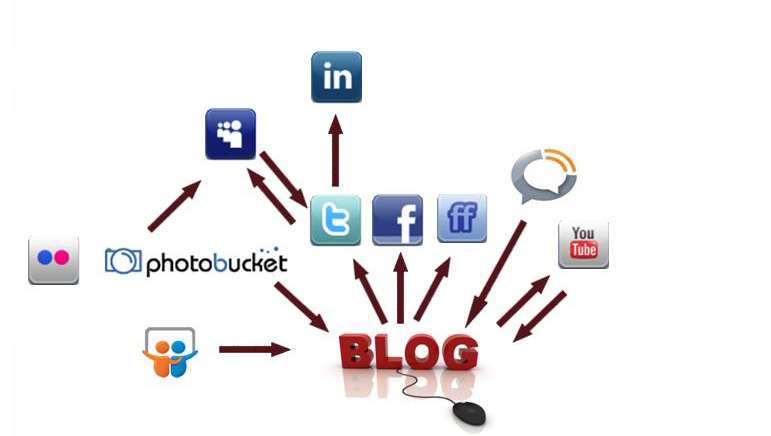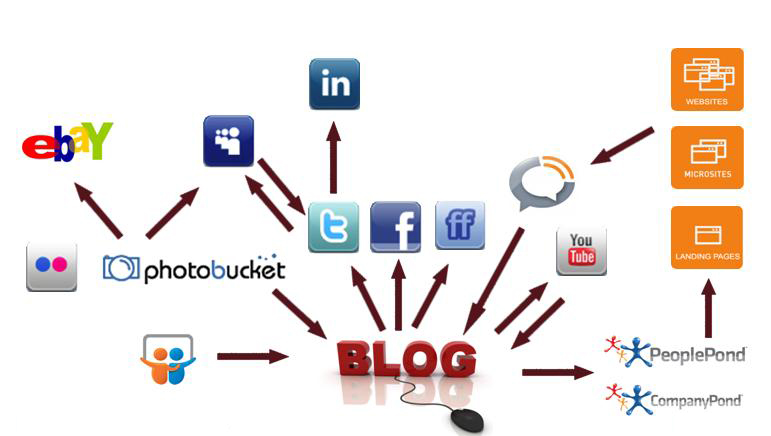The Only Thing That Matters Is Your Story
We are experiencing a change in the world of customer communication. It is no longer the company that is controlling the brand management but the consumer. Forget the concept of social media… we have been witnessing this transition for the past decade… and it is increasing exponentially since the inception of the Internet.
Customers are now talking about you at a staggering pace using sites like Twitter, Facebook, Myspace and LinkedIN… and the list goes on. I was watching TV today and taking note of the increasinly terrible advertising that is taking place on the cable networks. I began to realize that I (along with millions of others) are no longer making buying decisions based on traditional advertising. You can take the definition of traditional advertising any way you want but in my terms it means old ways of doing business.
A great book to read is Made to Stick (from the Heath Brothers) which talks about the concept of creating a story to push your company into the next decade of communication. I have read, reread, and read again the excellent points made throughout the book and began to realize one thing… if you do not create a story that your customers can retell and share.. you will lose market share steadily over the next couple of years.
We might not be seeing a steady decline because social media and the Internet is still bleeding edge when it comes to market penetration in a global sense. My question is simply this: What happens when we do reach the peak of market penetration for social media? What happens when your customers ARE using the tool and using it effectively? What do you do when you reach the point? Are you ready for the onslaught? Is your communications department familiarizing themselves with the tools?
All that matters is your story. You are going to be creating a story based on a marketing process but we might come to the point where it doesn’t matter what you want your story to be… your customers are going to create a story anyway. Experience is the key to the future of marketing and customer communication. They (your customer) are going to be talking NOT about your sales or PR release but how they personally experienced your product or service.
Are you preparing yourself for the new age of communication?
Related articles by Zemanta
- Social Media And Brand Development (slideshare.net)
- IMN Party Pulse™ and Net Connect™ Social Media Capability Fuels Network Growth for Direct Selling Companies (prweb.com)
- Social Media as Storytelling (techwag.com)
- Adults are making the Internet less cool (trueslant.com)
Social Media: The Haven for New Ideas
 Ali is a 2009 graduate of Hanover College. She works at an Indianapolis SEO company, Slingshot SEO, Inc., where she integrates the importance of SEO and social media in the blogosphere. She is an avid Tweeter and blogger. Ali is an upbeat person who loves working and communicating (in any form!) with everyone.
Ali is a 2009 graduate of Hanover College. She works at an Indianapolis SEO company, Slingshot SEO, Inc., where she integrates the importance of SEO and social media in the blogosphere. She is an avid Tweeter and blogger. Ali is an upbeat person who loves working and communicating (in any form!) with everyone.
As I caught up with my daily blog feeds this week, I stumbled across a very interesting blog post by Copyblogger’s Jonathan Morrow entitled “The Alexander Graham Bell Guide to Changing the World.” Turns out, this post (and a swift kick to my backside to keep up with blogging) helped to sort through the mess in my brain and I was finally snapped out of my case of writer’s block. Halleluiah! So what DOES Alexander Graham Bell have to do with changing the internet marketing world?
Of course we all know that Bell changed the world with his invention of the telephone. Right? Actually, it’s safe to say that we were lied to as elementary school students (GASP!). Yep, according to the research, two men created the first two models of the telephone BEFORE Bell. Who knew?! More importantly, how did Bell jump ahead of these fellow inventors and gain the credibility for the telephone?
Bell was a smart cookie. Instead of hording his communicating device idea in his bedroom, he spent years fighting to get his idea out in the world. He fought for the right to get HIS idea patented. Through his journey of changing the way people communicated, it was evident that Bell understood the most important aspect of getting information to the people. Morrow explains, “He [Bell] understood that what matters isn’t who thinks of an idea first. It’s not even who takes action first. It’s who spreads the idea the farthest.” Smart, huh?
This phenomenon is still alive today, possibly more than ever. We ALL have ideas upon ideas upon ideas (IDEAS, get the drift?) that we would love to ONE day share with the world…and then someone else finally DOES and then “my idea” becomes “his/her idea” and then you are back to square one. Is this you? I know I am definitely an idea pack rat (as Morrow describes). I’m sure I’m not alone.
So, what now? GET THAT INFORMATION OUT THERE! If you take the time to come up with a new, brilliant idea, why wouldn’t you want to share it? Fight like Bell did and your passion behind your ideas will be revealed and people will notice. Be that person who shares information and ideas with the rest of the world. Heck, isn’t that what the internet is for anyway?
My hope is that you see that I’m not saying that you need to create immensely creative and amazing inventions or come up with the ‘next big trend’ (although, face it, that’d be pretty sweet), but the internet allows us to take information that we learn from others and add our own understanding and thoughts (of course giving credit where credit is due!). We all have thoughts, right? Well, use social media to get those thoughts out instead of becoming an idea pack rat!
As writers in the internet-driven world, we know there is more of a focus on getting the information OUT to the masses, rather than being the first one to do so. This directly relates to Bell’s advice—spread it the FARTHEST. How do we do this? Social media. We tweet, post, blog, Flick new information 24-7. The new age of information and idea exchange is at our fingertips, only a keystroke away, how much more cliché can I get?
Have a case of writer’s block? Winter blues got you down? Dig through those ideas you have packed away and start typing. Fight for your ideas and be the passionate one who gets the word out, just as Alexander Graham Bell did, and who knows where you’ll end up!
Related articles by Zemanta
- #BlogIndiana: Jason Falls, Bloggers and the Google gods (marketing.blogtanker.com)
- Bell’s telegraph killer (kottke.org)
- The Alexander Graham Bell Guide to Changing the World (copyblogger.com)
- 3 Chords & the Truth: The Podcast Episode 2 (yesbutnobutyes.com)
Social Media + SEO = Social Media Infrastructure
 Since 2002, Chad H. Pollitt has played an integral role in designing, developing, deploying, executing and tracking robust web marketing strategies for over 100 client companies and organizations and is an Internet Marketing Expert.Chad is a decorated veteran of Operation Iraqi Freedom and an Internet Marketing Manager at Digital Hill Multimedia, Inc., the leading web development and internet marketing agency in the Midwest. His white papers and articles have been published in over a dozen newspapers and websites throughout the world. With over 10 million dollars of tracked ROI for SEO alone, he has been featured on multiple radio shows, podcasts and in The Wall Street Journal.
Since 2002, Chad H. Pollitt has played an integral role in designing, developing, deploying, executing and tracking robust web marketing strategies for over 100 client companies and organizations and is an Internet Marketing Expert.Chad is a decorated veteran of Operation Iraqi Freedom and an Internet Marketing Manager at Digital Hill Multimedia, Inc., the leading web development and internet marketing agency in the Midwest. His white papers and articles have been published in over a dozen newspapers and websites throughout the world. With over 10 million dollars of tracked ROI for SEO alone, he has been featured on multiple radio shows, podcasts and in The Wall Street Journal.
View the slideshow presentation of this blog here > Social Media Infrastructure
How do you optimize social media to come up in search? What social media sites should I use for my business? Won’t social media take up all of my time? These are questions I get every day and the answer is simple: Build a Social Media Infrastructure.
- What is a Social Media Infrastructure? Definition: Social media platforms chosen for engagement and how they are connected to one another with a Blog at its base pushing content to other platforms.
- Why should I build a Social Media Infrastructure?
- SEO – By connecting your social media platforms via RSS and traditional backlinks you are building a “keyword neighborhood” that will raise the relevancy of all of your web platforms in the infrastructure for those keywords. The result, if properly executed, will be multiple first page results for some of the keyword phrases in your “keyword neighborhood.”
- Saves Time – With a Blog at the base of your infrastructure you won’t have to post content on multiple platforms. Once the infrastructure is in place you will only have to post once.
- Increases Reach, SOV and Website Referral Traffic – The more social media platforms used in the infrastructure the more people will see your content, brand and message resulting in more referral traffic for your conversion platform or website.
- 3 C’s – You will have Consistency, Clarity and Congruency of message throughout the web.
3. How do I build a Social Media Infrastructure?
- Do a Keyword Workshop
- Gather your digital assets (video, pics, graphics, audio, presentations, press releases, etc.)
- Build a Blog
- Choose multiple social media platforms based on your digital assets and target demographic
- Connect the platforms with links, RSS feeds and widgets (recommend http://twitterfeed.com as a start).
- Make sure lead generation websites, microsites and/or landing pages are linked into the infrastructure.




![Reblog this post [with Zemanta]](http://img.zemanta.com/reblog_e.png?x-id=5b89c7ac-f374-4854-8a33-a59333a836fe)
![Reblog this post [with Zemanta]](http://img.zemanta.com/reblog_e.png?x-id=41d2cf4e-291c-43b2-8802-f93a146c4ba7)
![Reblog this post [with Zemanta]](http://img.zemanta.com/reblog_e.png?x-id=a2fca594-ca34-4419-8c64-0441cedbecb2)